|
BULB LOG 32 - 9th August 2006
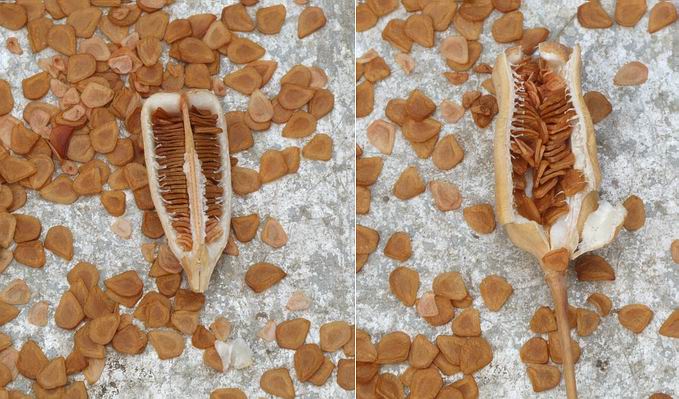
Fritillaria seed pods
Sometimes the fritillaria seed has only just ripened by the time I come round to repot them. These pictures have a few lessons to show us if we observe them carefully. Firstly we can see that the seeds are held in three separate sections of the capsule, typical of the lily family; secondly we can see the fine attachments extending from the side of the capsule to separate the individual seeds. This is a clever device to prevent all the seeds dispersing in one puff of wind. The seeds are dispersed over a period of time as the capsule dries and opens further. The other lesson is that the capsule on the left tapers towards the base. I commonly find this with our frits and it is an indication that the pollen for some reason has not reached the embryo seeds at the base so they do not get fertilised and swell up. On the right is the opposite, where the pod starts narrow and widens to the base - this is more unusual and indicates there was some reason that the uppermost seeds were not fertilised while the lower ones
were. The most likely reason for this is the erratic weather we had when they were in flower with many days of cold damp weather followed by a few warm sunny days allowing the pollen to flow.
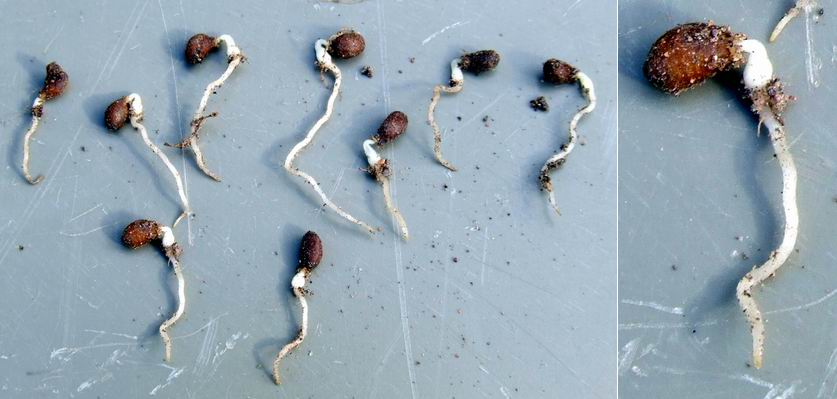
Trillium seeds germinating
Inevitably with so many pots around, labels get lost, or perhaps (against my own advice) I thought 'I will remember to put a label into that pot later', anyway, I often find pots without labels. I discovered this one as I was going through a pile of pots lying on the path and as I carefully tipped it out to see if there was anything alive in it I noticed these seeds germinating. I am not completely sure but I think these are trillium seeds germinating - I will have to wait several years to find out which trillium it is. When will I learn?

Fritillaria house in change
Learning is a process that is always going on when you are growing plants, an old friend once told me you need two lives to be a gardener, one to learn and one to do. I think it is the learning part that is the most fun even though the mistakes I make along the way can be very frustrating and disappointing when I lose a plant. So you may well ask why, when I have had a reasonably good success growing the frits in clay pots plunged into sand for many years, am I changing over to square plastic pots? Well as you know space is the major factor, but the challenge is another. I am one of those people that has to continually experiment. The biggest difference in my growing regime will be the frequency of watering. From my experience with all the other bulbs that I have already converted to plastic pots, I will have to water about a third of the amount that I would if I stuck with clay pots and the last watering before the summer dormancy has to be much earlier to give the compost in the plastic pots more time to dr
y out. Here I have emptied the plunge first on one side and then the other.
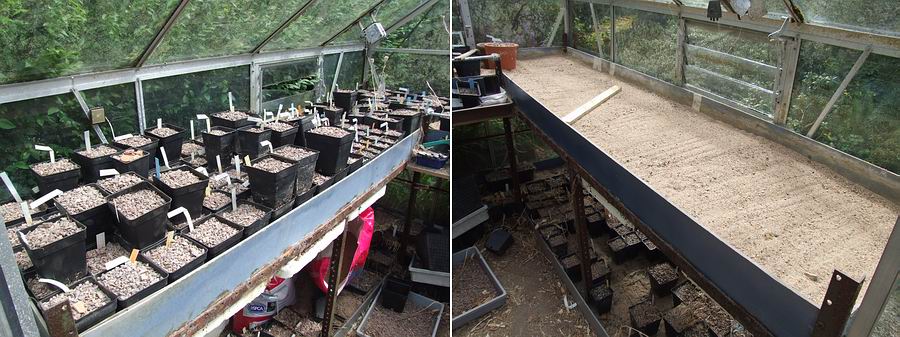
Fritillaria house sand plunge
While they were empty I removed some of the sand as I do not need to plunge the plastic pots, just sit them on a level bed of sand. Also the warming cable that I have at the bottom of the sand plunge to prevent the bulbs from freezing needs to be fairly close to the bulbs to work.
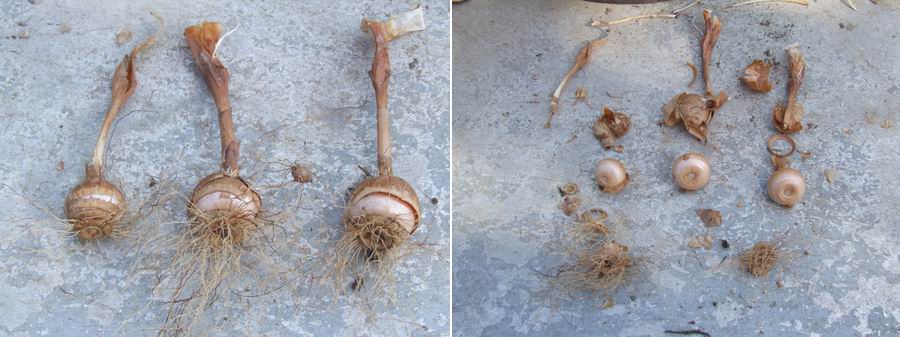
Crocus speciosus corms
To break the routine of doing pot after pot of frits I grab an occasional pot of crocus so I can see a different type of bulb, well, corm. These I clean by removing the remains of the old corm from the base and any of the old tunics that are loose and come away easily as I gently roll the corms between my hands. Crocus tunics play a very important part of the taxonomic order and to identify a crocus you often need to see the tunic as well as the flowers and leaves. Taking photographs or writing on the label the type of tunic is a good way of helping to identify your crocus when they flower without having to disturb them.
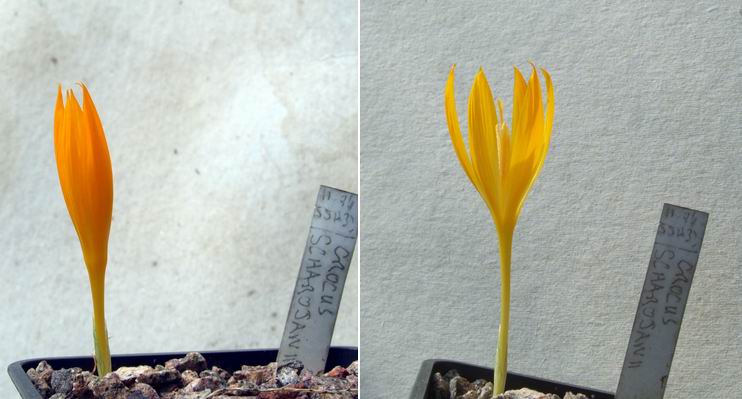
Crocus scharojanii
What joy and excitement when I found a lone flower on a pot of Crocus scharojanii this week. Last year a slug bit off the first flower from this pot of seed raised bulbs. I have never found Crocus scharojanii an easy bulb to grow and it is even more difficult to get hold of - I have never seen it offered for sale. The form Crocus scharojanii flavus is much easier to grow and that is the one you occasionally see offered. We have three pots from Joseph Halda seed sown in November 1996 and this is only the second flower I have had.
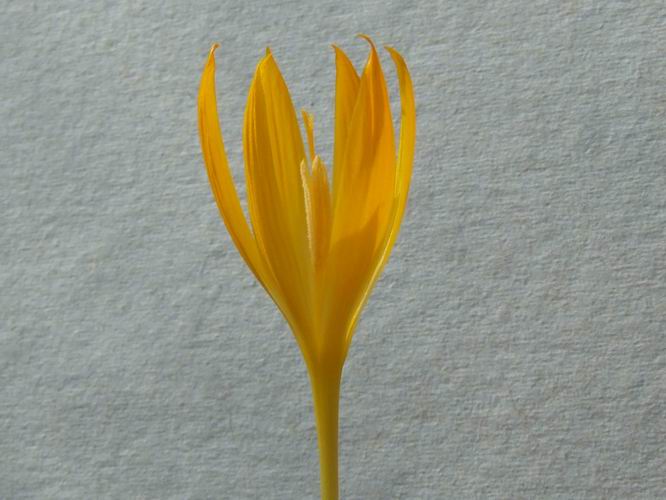
Crocus scharojanii tepals
It has lovely wispy, acuminate, tips to the tepals which along with the egg yolk yellow give it is charm. While it is in flower I have moved it, from the outside frame where it lives, to a glass house so I can keep it safe from slugs and hopefully, oh please, get a seed set.
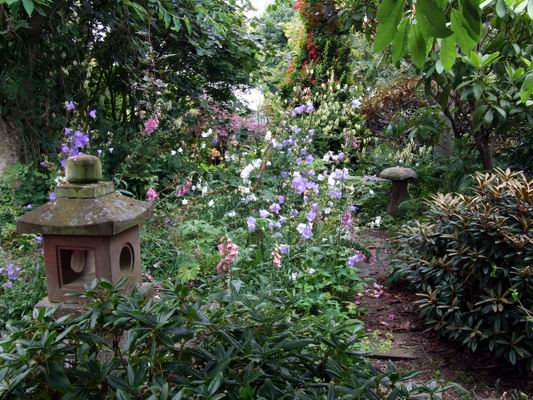
Summer in the bulb bed
In the garden we allow campanulas, poppies, foxgloves and the likes to self seed in the bulb beds to give us summer interest. They also serve to use up any moisture so the bulbs do not get too wet when it rains.
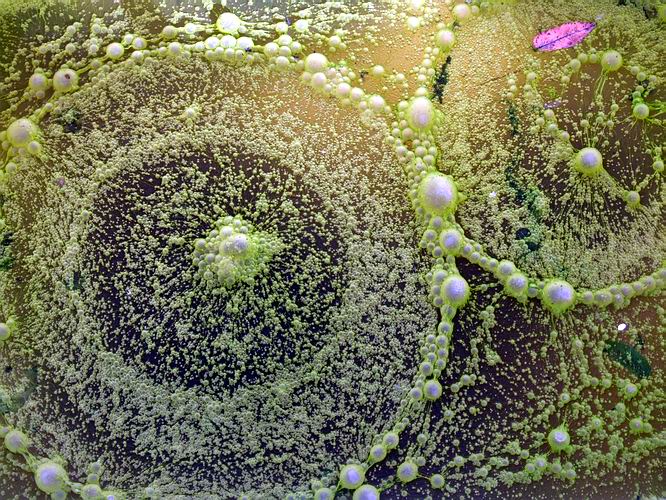
Alien encounter
I had an Alien encounter the other morning. Is this the water equivalent of crop circles or something much more sinister?
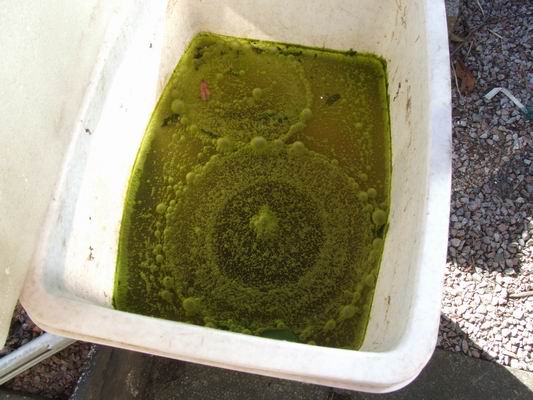
Pots soaking
No it is just the clay pots soaking in water before Maggi scrubs them. The heat has caused an algal growth on the surface and the bubbles of air slowly rising from the murky depths where the soaking pots stacked one inside the other has caused the circles. (Note from Maggi: Okay, okay, I'll scrub them soon, meantime I'm busy packing bulbs!!)
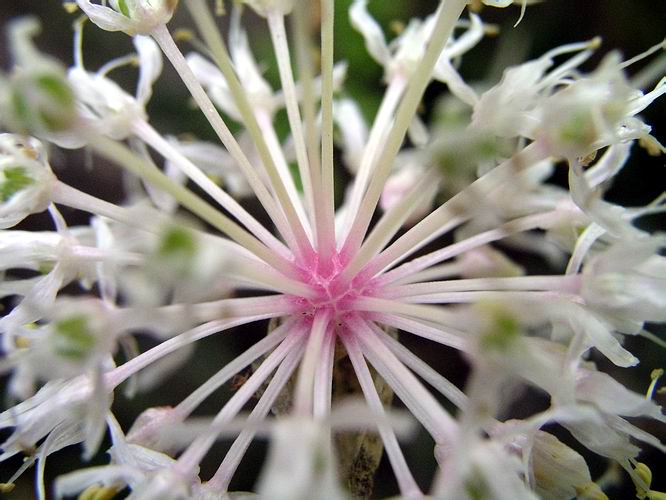
Allium prattii
Another alien-like vision is this close up of a flower on Allium prattii where the beauty of the flower is in the detail.
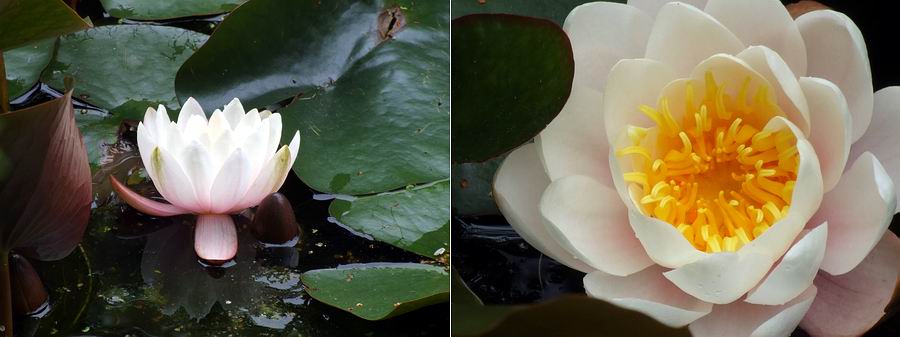
Nymphaea alba
The exceptional heat of this record breaking summer has given us the best flowering we have ever had on the water lilies. What has this to do with bulbs you ask? Well these ancient plants do have a rhizome type structure and it is thought that they may be the ancestors of all bulbous plants which, like our very distant ancestors, emerged from the murky depths.
^ back to the top ^
|

